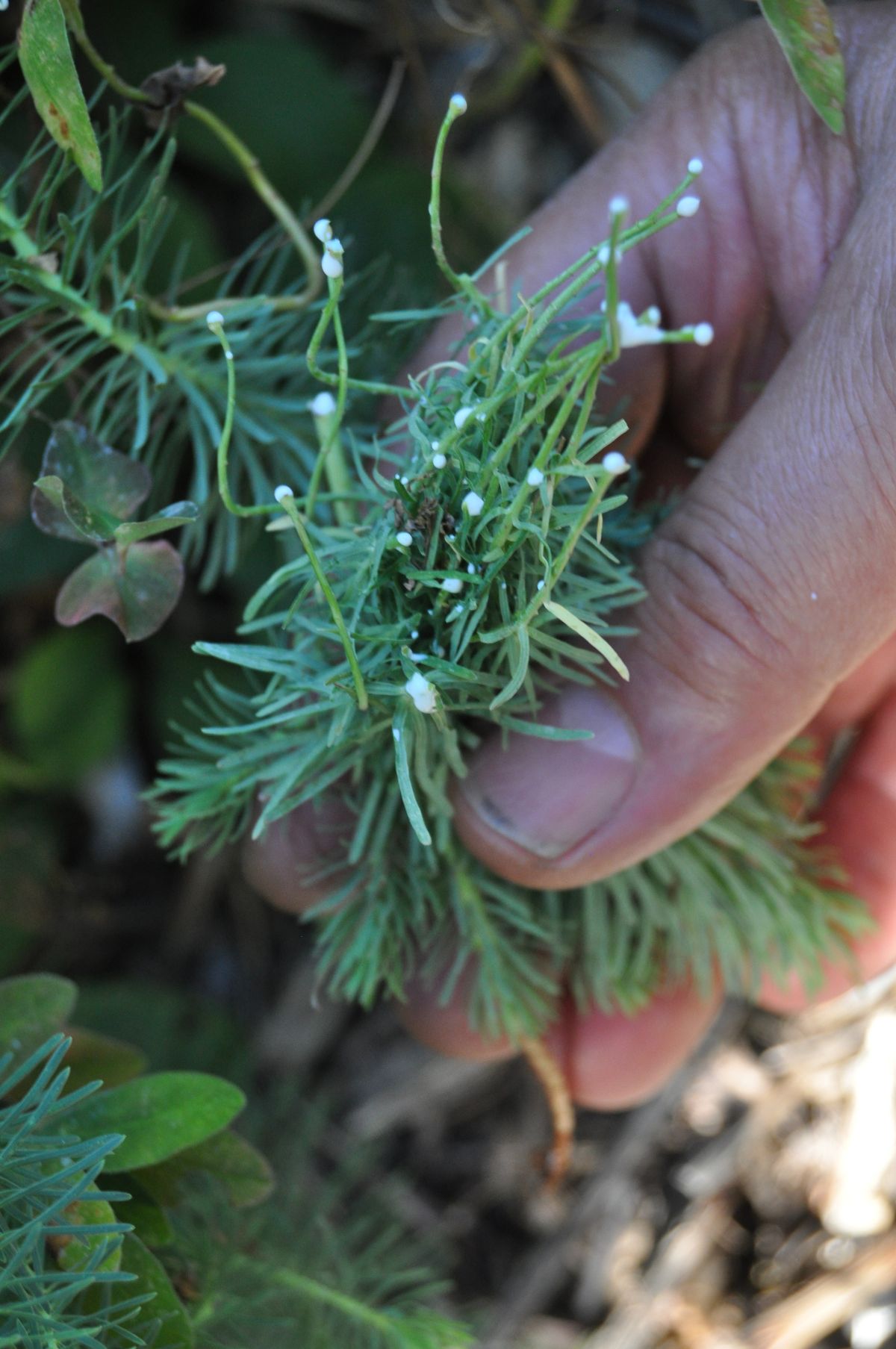Euphorbia has irritating drawback

A few plants in our gardens come with “gifts” that can cause irritation to skin and worse in eyes, nose and mouth. Recently a reader contacted me after she had an unpleasant encounter with euphorbia, or spurge plants, while working in her garden.
Euphorbias are a group of more than 2,000 species scattered all over the world, ranging from small annuals to trees that often look like sculptures rather than living plants. In our region, most are perennials that bloom in the late spring and early summer with chartreuse yellow, cream or red flowers. One of the more common ones is cushion spurge (Euphorbia polychroma), which forms a 1-foot tall by 2-foot wide tidy mound. Its multitude of intense chartreuse blooms in May light up the garden and provide a nice backdrop to tulips, alliums and the last of the daffodils. The poinsettia is also a member of this family.
Euphorbia flowers are unusual. Rather than having the traditional petals, stamens and pistils that make up most flowers, euphorbias add to these structures. They have a fused cup that forms around very tiny true flowers with large bracts below this structure. The bracts provide most of the color for the flower. Think of the large red or pink leaves on the poinsettia that we often mistakenly call petals.
The plant does have one major drawback that sent the above-mentioned reader to the ER just after the Fourth of July. The milky, sticky sap can cause major skin irritation. If you get it in your eyes, it can cause an intense burning and can result in eye damage if not treated promptly. To avoid this, always work in long-sleeve shirts and gloves around the plant, wear glasses or sunglasses so drops of it don’t splash into your eyes, and wash the clothing after you finish. If you get euphorbia sap in your eyes, immediately flush them with cool water and seek medical attention as soon as possible. Our reader recovered after a few days.
Even with this drawback, the hardier euphorbias are a good choice for our Inland Northwest gardens. They are drought resistant, so they do well in those hot, sunny spots in the garden that never seem to get enough water. They do well in average soil with little need for fertilizer, pruning or deadheading, and they are deer resistant.
One euphorbia that has become a major noxious weed, particularly west of Spokane, leafy spurge takes over pastures and open fields, making it impossible to cut hay from infested fields, and livestock don’t like it. Chemical weed killers are not reliably effective on the plants, and even the release of bio-agents like leafy spurge flea beetle and spurge hawk moth haven’t slowed it down.